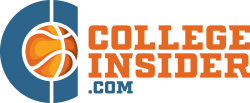A Guide to College Basketball Scholarships for High School Students
If you are wondering how to get a scholarship for basketball, you are in the right place to find your answer. It is estimated that over a million boys and girls in the United States alone play high school basketball, with many more participating at the international level. Even yet, only around 50,000 of them, on aggregate, get up with basketball sponsorships. If you want to join their ranks, you should check the cause and effect essay writing service and see what it offers. It is unlike any schoolwork you've ever done. The thesis statement, research, plan, structure, grammar, and spelling all need to be perfect. Also, you will need the guidance of an expert as you make decisions about high school and further education. Specifically for overseas candidates who might not be aware of appropriate norms and criteria, this procedure may be overwhelming without solid guidance, a sound strategy, and a trustworthy counselor to count on. For example, tools like the age calculator by Omnicalculator can help international athletes determine whether they meet age-based eligibility for U.S. high school or collegiate programs—critical information often overlooked early in the process.
Maintain Your Focus And Participate At The Finest Level Possible
The best way for college administrators to effectively evaluate the potential of a recruit to perform at the collegiate level is to see them compete against other highly rated prospects from throughout the nation. Because it gives recruits the opportunity to compete at the national level, the Amateur Athletic Union (AAU) is quite attractive among top-tier schools. Nevertheless, due to the fact that recruits are sometimes needed to travel to a number of different events, this level of AAU is the most costly. Although participation in club basketball is beneficial, it is not a must for receiving a basketball sponsorship. High school championship sports teams may provide an excellent opportunity to compete at a high level.
Learn All The Positions Well
Scholarships for basketball can’t be achieved without learning all about the positions within the pitch. Although most international players know the general distinctions between positions in basketball, they may not know how those differences translate into the organizational structure of a collegiate team. Now, let’s explain all the roles separately.
Center
A basketball group's center often has to be the largest and most physically imposing player on the court to be effective at their position. They are the individuals who are often stationed nearest to the basket, making it their job to prevent opponents from scoring in close proximity to the basket by defending the rim, forcing turnovers from close range, and securing offensive rebounds.
Small Forward
In most secondary school basketball organizations, the small forward is a versatile player who is expected to help out in a number of various ways. While maintaining a consistent scoring threat, a player in this position must aid the team on the glass by rebounding the ball and assisting the point guard in passing ability and defending the opposition's wing players.
Shooting Guard
The role of the shooting guard is similar in that he or she provides another option for managing the ball, but he or she also has the opportunity to score. This often plays out on the wing in order to provide an opening for the team's post players by shooting from long range. On defense, shooting guards are frequently required to take on a range of roles, from guarding a smaller point guard to guarding a bigger forward.
Point Guard
The point guard is often tasked with handling the ball the majority of the time. Their primary role is to direct the attack, create opportunities for their colleagues, and maintain the ball moving so the defense can't set or close up passing routes. Point guards are often the shortest members of the frontcourt and must depend heavily on their on-ball abilities, vision, and intellect to make a difference for their team.
Power Forward
The power-forward spot in basketball has been occupied by some of the game's most intimidating athletes. Its primary responsibility is to operate within the paint, where it can best utilize its size and resilience to score near the basket and secure offensive rebounds. This is true even though the advanced prototypical power forward operates further from the basket, closer to the three-point line.
Get Down To The Nuts And Bolts: Height And Grades
Now that you know the percentages for receiving Division I basketball contracts, you can focus on the fundamentals that will ultimately decide your success. Those who aren't at least 6 feet 4 inches tall have a difficult time being offered high school scholarships for sports. It is conceivable for student-athletes who are shorter than 6 feet 4 inches to get a full athletic scholarship, but they will need to carefully manage their weight, athletic skill, and academic accomplishment to increase their prospects.
In Division I, teams can't afford to have players that could end up underperforming on the court. They can't sign talented basketball players who don't have the grades to play at this level. Instructors expect more than just athletic prowess from their players. So, being a good athlete won't save you if you don't do well in school. If you want to learn how to receive a basketball sponsorship, you should never let your fitness conditioning get in the way of your education.
Conclusion
These awards honor a select few students who have demonstrated the perfect balance of natural ability and hard work in school, on the field, or on the court. A basketball scholarship will be useful whether your goal is to become a famous player or to broaden your future career options via higher education. You shouldn't expect head coaches to come scrambling to promote you, whether you're a five-star candidate or a once-in-a-generation talent. A little bit of planning may go a long way toward increasing your chances of winning that college scholarship.


